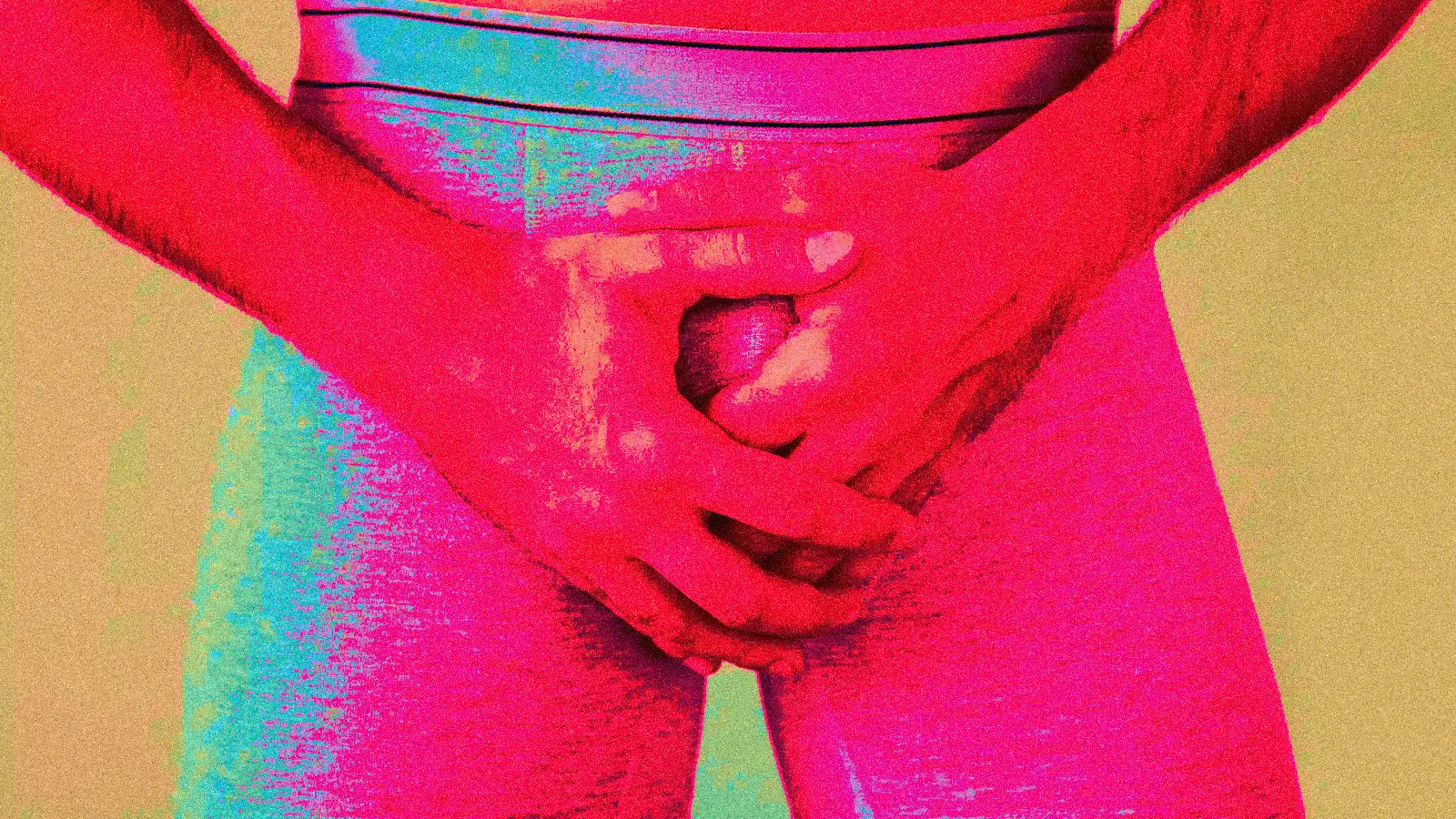Men's Urinary tract infections (UTIs): Causes, Symptoms, Diagnosis and Treatment
13501
Discover everything you need to know about urinary tract infections (UTIs) in men! From common causes and symptoms to diagnosis and treatment options.

Urinary Tract Infections (UTIs) in Mens | Asia’s Leading Sexual Health Clinics
An overview of UTIs in males
Urinary tract infections (UTIs) are less common in males than females. A urinary tract infection (UTI) can occur in any part of the urinary system. The urinary system comprises organs responsible for urine production and elimination from the body.
In males, this system consists of the kidneys, bladder, ureters, and urethra. The ureter is a pair of tubes that transport urine from the kidneys to the bladder, while the urethra, a single tube, carries urine from the bladder through the prostate gland to the end of the penis.
Your doctor typically categorises UTIs into "upper tract" and "lower tract" infections. An upper-tract infection affects the kidneys or ureters, while a lower-tract infection affects the bladder, prostate, or urethra.
The most common symptom of UTI in males is dysuria, which is painful or difficult urination. Other symptoms may include the need to go to the bathroom often, cloudy or bad-smelling urine, and pain in the lower abdomen or back. On the other hand, studies have shown that about 33% of males will experience urinary symptoms such as sudden hesitation, dribbling urine, and a slow stream.
What are the causes and risks of UTIs in males?
UTIs in the urethra are commonly caused by sexually transmitted diseases such as chlamydia and gonorrhoea, especially in younger people. Prostate problems, including an enlarged prostate (Benign prostatic hyperplasia), can cause UTI by obstructing urine flow and allowing bacteria to build up. Prostatitis, an infection of the prostate, shares similar symptoms with UTIs. Medical conditions such as HIV, diabetes, and other conditions affecting the immune system can also increase the risk of UTIs.
The causes and risk factors for UTI in males are as follows:
- History of UTIs
- Prolonged use of a urinary catheter
- Being bedridden or sedentary for extended periods
- Inadequate hydration
- Recent urinary tract or kidney surgery
- Urinary tract obstructions such as kidney stones or an enlarged prostate (Benign prostatic hyperplasia)
- Infection in the prostate gland (Prostatitis)
- Diabetes
- Human immunodeficiency virus (HIV) status
- Immunosuppressive treatments
- Having a foreskin (being uncircumcised)
- Faecal incontinence
- Engaging in unprotected anal sex or vaginal sex can increase the exposure of the urethra to bacterial, viral, fungal, or parasitic infections.
Men of all ages can get a UTI, but some factors increase the risk. Some of these are having an enlarged prostate, problems with the urinary tract, a history of urinary tract infections (UTIs), having diabetes or HIV, or having had immunosuppressant treatments or surgeries on the urinary tract.
When a younger man has a UTI, it is often due to anatomical problems. However, a detailed sexual history can help find risk factors, such as sexual activity with new or multiple partners, which can lead to STD-related conditions like urethritis, prostatitis, or epididymitis, which can cause a UTI.
Bacterial, viral, fungal, and parasitic infections
Bacteria
Sexually active young women often get bladder infections caused by bacteria in the lower urinary tract. Escherichia coli is the most common bacterium causing UTIs. Bacterial kidney infections are also common in young women but less common than bladder infections. Nevertheless, women are 50 times more likely than men to develop UTIs between 20 and 50.
Men are more likely to develop urethritis or prostatitis, as their urethra is longer and bacteria have more difficulty reaching the bladder. UTIs have become more common in men and women over 50.
While UTIs are more frequent in men over 50, sexually transmitted infections (STIs) are the leading cause of UTIs in younger men, with chlamydia and gonorrhea being the most prevalent.
Viruses
The herpes simplex virus has the potential to cause discomfort during urination and hinder bladder emptying by infecting the urethra. In most cases, immune system compromise due to conditions like cancer, HIV/AIDS, or the use of immune-suppressing medications prevents viral urinary tract infections that affect the bladder and kidneys from occurring.
Fungi
Specific types of fungus, known as yeasts, can infect the urinary tract, a condition commonly referred to as a yeast infection. In addition to causing inflammation of the vagina (vaginitis), yeasts, especially Candida, are the primary culprits behind urinary tract yeast infections, or candidiasis. These infections occur more frequently in individuals with a weakened immune system or a bladder catheter in place. Furthermore, both fungi and bacteria can infect the kidneys simultaneously.
Parasites
Trichomonas, Schistosoma hematobium, and Microfilaria are among the parasitic infections commonly associated with the urinary system. Trichomonas vaginalis, for instance, can cause inflammation of the vagina and urethra and can be detected in urine sediment.
Trichomoniasis, caused by a microscopic parasite, is a sexually transmitted infection that commonly causes a greenish-yellow, frothy vaginal discharge in women and occasionally infects the bladder or urethra. Men may also experience a trichomoniasis infection in the urethra, but it typically does not cause symptoms.
Schistosomiasis, caused by a fluke worm, can affect the kidneys, ureters, and bladder. This infection is a leading cause of severe kidney failure in Africa, South America, and Asia. In addition, long-term bladder Schistosomiasis infection may lead to blood in urine or blockage of the ureters, which could eventually cause bladder cancer.
Filariasis, a threadworm infection, can cause lymphatic vessel obstruction resulting in the entry of lymphatic fluid into the urine, a condition called chyluria. In addition, Elephantiasis, a severe tissue swelling, can occur, particularly in men, where it may involve the scrotum.
Add us on Line and stay in touch.
What are the signs and symptoms of UTI in males?
Males with urinary tract infections (UTIs) may not show any signs or symptoms. However, if they do have symptoms, they may experience the following:
- Painful urination,
- A frequent urge to urinate,
- Difficulty starting to urinate,
- A slow urine stream or urine leakage
- A sudden urge to urinate,
- Releasing small amounts of urine at a time,
- Blood in the urine,
- Pain in the lower central abdomen or back, and
- Cloudy urine with a strong odour.
In addition, men with complicated UTIs may experience symptoms such as fever, chills, nausea, vomiting, and back pain. These signs show that the infection has spread to the kidneys or upper urinary tract, a severe problem that needs treatment immediately.
What are the complications of a UTI?
Urinary tract infections (UTIs) in males can cause severe problems if they are not treated or treated well.
Prostatitis: Inflammation of the prostate gland can occur when bacteria from a UTI spread to the prostate. Symptoms include pain or discomfort in the lower abdomen or pelvic area, painful ejaculation, and difficulty urinating.
Epididymitis: Inflammation of the epididymis, a tube located behind the testicles, can occur when bacteria from a UTI spread to the epididymis. Symptoms include pain and swelling in the testicles and a tender or lumpy epididymis.
Orchitis: Orchitis is most commonly seen in patients in the later stages of epididymitis, where the inflammation has spread to the adjacent testicle, causing tenderness, warmth, and swelling in the scrotal area. These patients typically have a history of epididymitis and urinary symptoms.
Pyelonephritis: This is a severe form of UTI that affects the kidneys. Symptoms include fever, chills, nausea, vomiting, and back pain. Pyelonephritis can cause permanent kidney damage if left untreated.
Urethritis: Urethritis is inflammation of the urethra caused by bacterial infections, trauma, or irritants. Symptoms include painful or difficult urination, discharge, and itching or irritation around the urethral opening.
Sepsis (Urosepsis): This is a life-threatening complication of UTI that occurs when bacteria from the urinary tract enter the bloodstream. Symptoms include fever, rapid heart rate, low blood pressure, confusion, and difficulty breathing.
Recurrent UTIs: Men who experience multiple UTIs may develop chronic UTIs, which can cause long-term complications such as kidney damage and scarring.
If you have a UTI, you should see a doctor right away. Infections that aren't treated or treated well can lead to severe problems.
Prostatitis & UTI
Prostatitis syndromes are common in young and middle-aged men and may present with pain, bladder irritation, and blood in semen.
Acute prostatitis presents with fever, chills, myalgia, dysuria, pelvic/perineal pain, and cloudy urine. Swelling of the inflamed prostate can cause obstructive symptoms such as dribbling or hesitancy. A rectal exam can be performed, but a prostatic massage is not recommended. The prostate is warm, swollen, soft, and tender. Palpation can be painful and may lead to bacteraemia. In addition, prostatic massage should not be conducted in the setting of UTI or urethritis.
Chronic prostatitis is a condition where symptoms last for at least three months and can affect the patient's quality of life. Chronic bacterial prostatitis and nonbacterial prostatitis have similar symptoms, and a culture of prostatic secretions is the only way to differentiate between the two. Proctodynia is a non-inflammatory condition with the same symptoms as chronic prostatitis, but the patient has never had a UTI.
Epididymitis & Cystitis UTI
The epididymis is tender and indurated in early epididymitis, but the testis is non-tender and soft. In a few hours to a few days, the inflammation spreads to the nearby testicle, and patients may feel pain and swelling in the scrotum and have frequent, urgent, or painful urination. Then, it gets harder and harder to find the lateral sulcus between the testicle and the epididymis, and it may be impossible to tell the testicle from the epididymis.
Dysuria, frequency, urgency, and suprapubic pain are usually present in cystitis patients. Fever and flank pain may be present, but not usually. Symptoms cannot reproducibly differentiate cystitis (lower UTI) from pyelonephritis (upper UTI).
Orchitis & UTI
Most of the time, orchitis shows up in the later stages of epididymitis as a tender, warm, and swollen mass in the hemi-scrotum. While viral orchitis is known for the various symptoms brought on by the virus that caused it, tuberculosis-related orchitis frequently has additional signs in the urinary tract or lungs. In some studies, the Mumps virus, for example, can cause orchitis in up to 18% of postpubertal boys infected, with signs starting within one week of parotitis. In addition, up to 30% of cases can be bilateral, with sterility developing in up to 10% of cases.
Pyelonephritis & UTI
Pyelonephritis is a type of urinary tract infection that affects the kidneys. Symptoms include fever, chills, and flank pain, sometimes resulting in low blood pressure. Older men with enlarged prostates are at higher risk, and the condition can sometimes be present without noticeable symptoms. The diagnosis is typically based on a combination of symptoms and laboratory tests, and other conditions, such as appendicitis and pneumonia, may need to be ruled out.
Urethritis & UTI
The incubation period of gonococcal urethritis is 2-6 days, while for nongonococcal urethritis (NGU), it is 2-6 weeks. Symptoms of gonococcal urethritis include dysuria, a thick, milky discharge, and pruritus, while signs of NGU are less severe, and the discharge may be clearer. Patients with urethritis have a thick, milky discharge, and gram stain is critical to an immediate diagnosis, though co-infections are possible. Gonorrhoea may have a thicker, more copious discharge than chlamydial urethritis.
Sepsis (Urosepsis) & UTI
Sepsis is a condition in which the body reacts to an infection in a way that can damage organs and lead to death. Urosepsis is a type of sepsis caused by infections in the bladder, kidneys, or other parts of the urinary system. Urogenital infections are a contributing factor in about 25% of sepsis cases.
Recurrent UTIs
Recurrent urinary tract infections (UTIs) can be a problem for men, especially those with a health problem like a swollen prostate or kidney stones. These conditions can make it hard to empty the bladder all the way, which lets bacteria grow and leads to repeated bladder infections. Recurrent UTIs can lead to kidney damage or other serious complications.
What are the treatment for UTIs in males
The primary treatment for UTIs typically involves antibiotics. The specific medication and duration of treatment depend on factors such as the type of bacteria detected in the urine and the patient's overall health.
Also, speak with our docotor if your are suitable for cirucmcision if you are having recurring UTIs.
Learn more: Is Circumcision Painful?
How to diagnose UTIs in males
A thorough physical exam should focus on the vital signs, kidneys, bladder, prostate, and external genitalia of men with genitourinary complaints. In addition, the exam should include the following:
- Listening to and tapping on the upper abdominal quadrants and costovertebral angles.
- Feeling the suprapubic area.
- Carefully looking at the penis, urethral meatus, testes, and epididymis.
The diagnostic procedures for UTIs include:
Urine analysis: A urine sample may be collected and analysed in a laboratory to check for bacteria, red and white blood cells. Patients may be advised to wipe their genital area with an antiseptic pad and to collect midstream urine to prevent contamination.
Urine culture: If UTI is suspected, the urine may be sent for a culture test to determine the type of bacteria causing the infection and to identify the most effective medication for treatment.
At PUSLE Clinic, we have the most advanced PCR DNA TEST that tests for 28 infections in Thailand with just one sample!
Imaging tests: Imaging tests such as an ultrasound, CT scan, or MRI may be ordered to look for structural abnormalities in the urinary tract, especially in recurrent UTIs. Contrast dye may be used to enhance the visualisation of the urinary tract.
Cystoscopy: For patients with recurring UTIs, a cystoscopy may be recommended. This test involves using a cystoscope, a long and thin tube with a lens inserted into the urethra, to view the bladder's interior.
Are you seeking an all-inclusive screening to diagnose and treat your UTI?
Look no further than PULSE Clinic! Our team of experts provides comprehensive testing to identify the root cause of your infection and prescribe the most effective treatment plan.
With our state-of-the-art testing for 28 infections, you can rest assured that you'll receive the most accurate diagnosis and effective treatment possible.
Contact us today to schedule your examination, screening, and treatment for UTI in men with PULSE Clinic.
Add us on Line and stay in touch.







